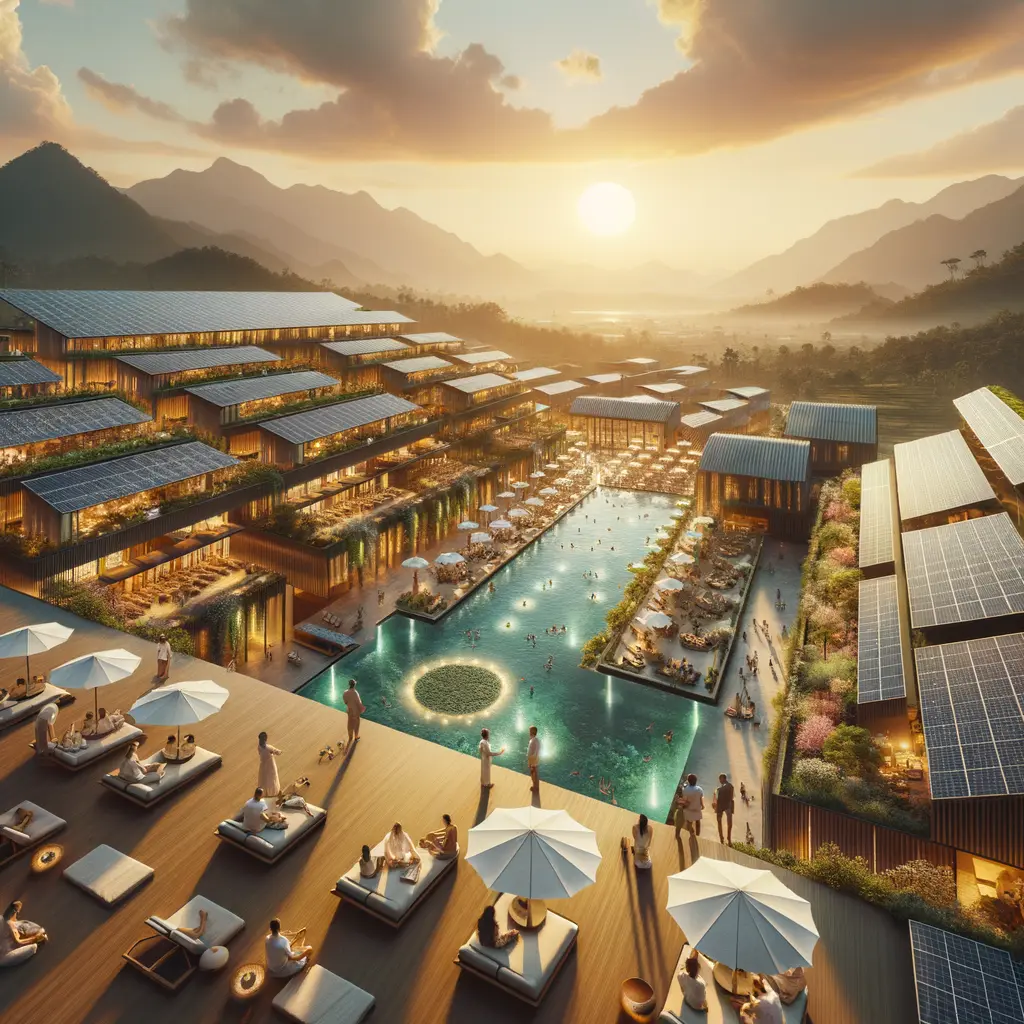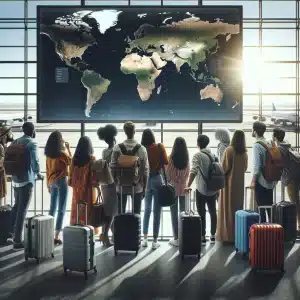What Exactly Is Wellness Tourism & Why It Matters Now
Wellness tourism is purpose-driven travel that prioritizes health, prevention, and holistic well-being over sightseeing alone. Think of it as the natural evolution of the spa holiday: people still love massages and facials, but in 2025 they’re pairing them with sound baths in the desert, nutrition coaching at award-winning resorts, and guided forest bathing in national parks. According to fresh Global Wellness Institute data, the segment is on track to top the one-trillion-dollar mark by the end of 2025—almost double its pre-pandemic size. That explosive growth makes wellness tourism one of the fastest-expanding niches in all of travel. Consumers are re-evaluating their priorities after years of uncertainty and screen fatigue, and they’re happy to pay a premium for trips that leave them feeling healthier than when they left home. Wellness travel trends 2025 reports show guests spending 178 % more per visit than conventional tourists. For operators, that means higher revenues and stronger year-round occupancy. For travelers, the benefits range from lower stress and better sleep to deeper cultural immersion. Throughout this guide we’ll unpack the numbers, trends and spa industry statistics that prove why the next decade belongs to wellness tourism—and how you can tap into its many wellness vacation benefits. (See our deep dive on “What Is a Spa Menu?” for related reading.)

Wellness Tourism by the Numbers: Market Size & Growth
If you want proof that wellness tourism is booming, simply follow the money. In 2019 U.S. spas alone generated $19.1 billion, according to spa industry statistics from ISPA. Even with the 2020 shutdown, revenue still hit $12.1 billion. By 2022, the figure leapt to a record $20.1 billion and continues climbing. Globally, the Global Wellness Institute data shows the entire wellness economy reaching $6.3 trillion, with nearly 16 % of that tied directly to travel experiences. Forecast models peg wellness tourism at $1 trillion in 2025 and $1.3 trillion by 2030. More telling is the spending behavior: wellness tourists drop 1.5–2 times more per trip than the average leisure visitor. Hotel and resort spas account for roughly 8.6 % of all U.S. spa outlets but capture an outsized share of revenue thanks to bundled room-treatment packages. Day spas still dominate in volume—about 80 % of outlets—yet med-spas and destination retreats are the fastest-growing sub-segments. Notably, travelers from North America and Western Europe make up the largest share, but Asia-Pacific is the fastest-expanding source market, driven by rising middle-class incomes and pandemic-induced wellness awareness. For operators, now is the time to integrate wellness language across websites, menu design, and social campaigns to capture this high-value audience. (Related topic: “How to Price Spa Packages for Profit.”)

Top Trends Fueling the 2025 Wellness Travel Boom
Several macro-forces are converging to propel wellness tourism into mainstream culture. First is the post-pandemic health renaissance: travelers crave immune-boosting experiences, outdoor adventures, and mental-health resets. Second, remote work has untethered millions from fixed offices, enabling “work-well” getaways where guests answer emails between cryotherapy sessions. Third, the lipstick effect is redirecting discretionary spend; consumers might skip a fancy handbag but will splurge on meaningful self-care retreats. Technology plays a role, too—wearables and telehealth make it easier to measure progress and personalize programs. Sustainability remains a core driver: eco-certified resorts that serve farm-to-table cuisine and source spa products locally resonate with mindful guests. Age demographics are widening as well; Gen Z seeks dopamine-fasting and digital detox weekends, while Boomers opt for longevity clinics offering IV drips and functional medicine consults. Finally, social media showcases Insta-worthy salt caves and thermal springs, inspiring FOMO-fueled bookings across continents. These wellness travel trends 2025 collectively explain why destinations from Bali to Budapest are expanding infrared-sauna suites and meditation domes. Embed the YouTube video here to see the full discussion of each trend in action.
How Spas, Hotels & Med-Spas Can Capitalize on Wellness Tourism
Businesses that pivot early stand to capture a disproportionate share of the $1 trillion pie. Start by auditing your service mix: does your menu include evidence-backed wellness staples like breath-work, sound therapy, or recovery technology such as Normatec compression? Bundle services into experiential itineraries—e.g., a 3-night “Sleep Reset” package featuring magnesium massages, blue-light-free rooms, and guided sunset meditation. Use language that highlights wellness vacation benefits rather than beauty alone; consumers are less price-sensitive when they perceive holistic value. Data shows wellness tourists spend 178 % more than regular leisure guests, so upsell retail thoughtfully—think adaptogenic teas and mineral-rich bath salts that prolong the in-resort glow. Partnerships also amplify reach: collaborate with nutritionists, fitness influencers, or local farms to create seasonal retreats. Remember that wellness tourists research extensively; secure third-party certifications (LEED, Well Building) and publish key spa industry statistics on your site for social proof. Finally, segment your marketing. Day-spa owners may lean on local SEO, but resort spas should target international travelers via tourism boards and convention partnerships. For deeper strategy, read our post on “SEO for Destination Spas.”

Planning the Perfect Wellness Vacation: Tips for Travelers
Ready to book your first (or next) wellness tourism escape? Start by clarifying your intention: are you seeking stress relief, detox, or post-injury recovery? Your goal will guide destination choice, whether that’s a silent-meditation monastery in Thailand or a luxury cryotherapy clinic in Dallas. Next, vet credentials. Look for resorts that publish practitioner bios and cite global wellness institute data on treatment efficacy. Pack smart: reusable water bottles, SPF 50 mineral sunscreen, and a journal for reflection are must-brings. Budget realistically—remember wellness tourists typically spend more, but packages often include accommodations, meals, and activities, softening the blow. Leverage loyalty programs like Marriott Bonvoy or Hyatt ALG to offset costs with points. Consider seasonality: shoulder seasons can slash rates by up to 30 % while maintaining service levels. Finally, schedule downtime. An over-stuffed itinerary defeats the purpose; aim for one cornerstone treatment per day supplemented by light movement and nourishing cuisine. Be sure to share feedback post-trip—reviews influence 85 % of future wellness travel trends 2025, according to Skift research. For packing checklists, see our article “Essential Gear for Spa Retreats.”

Outlook Beyond 2025: The Future of Wellness Tourism
All indicators suggest wellness tourism will not just survive but thrive beyond 2025. Analysts at McKinsey forecast compounded annual growth rates of 12–14 % through 2030, outpacing conventional leisure travel. Advancements in personalized medicine—think genetic testing and AI-driven nutrition plans—will deepen program customization, while climate-smart architecture will make retreats more sustainable. Expect cross-industry collaboration: airlines offering onboard mindfulness sessions, cruise lines with full-deck hydrotherapy circuits, and urban hotels converting rooftops into micro-forest spas. Government agencies are also recognizing the economic allure, weaving wellness trails into national tourism strategies. For businesses, ongoing innovation and transparent communication of wellness vacation benefits will be paramount. For travelers, greater choice means it’s easier than ever to align trips with personal health goals. In short, wellness tourism has shifted from niche to necessity, delivering tangible ROI for communities, operators, and, most importantly, guests seeking a healthier, happier life. Keep an eye on updated global wellness institute data and our weekly trend briefings to stay ahead of the curve.






